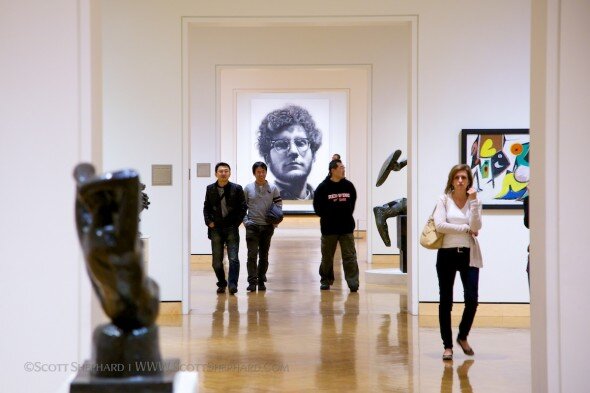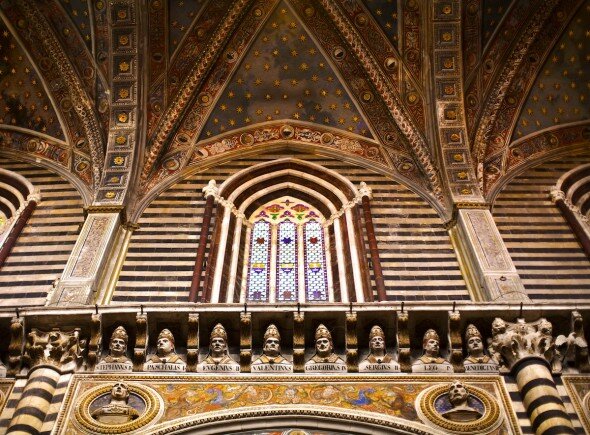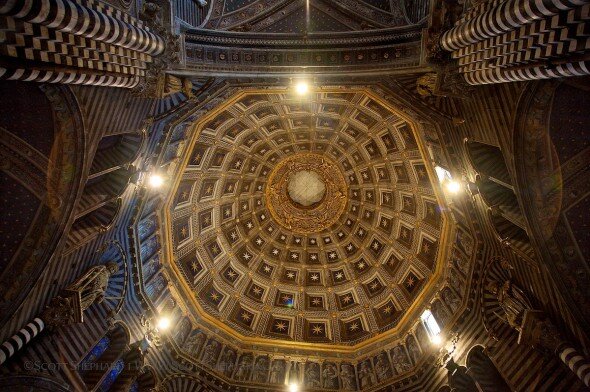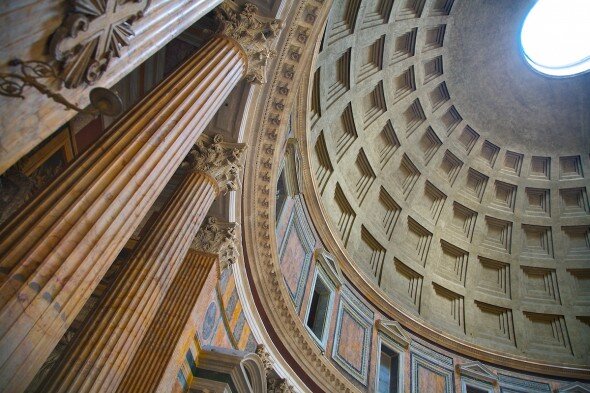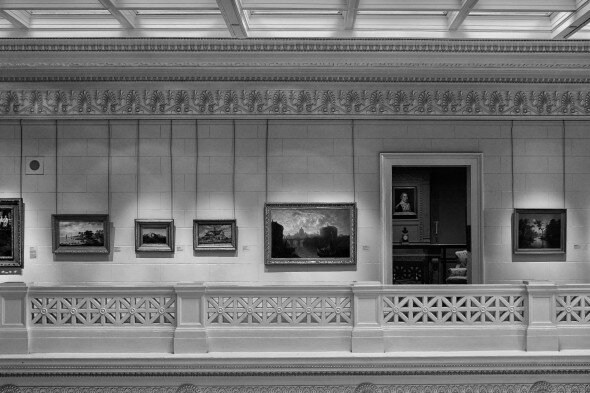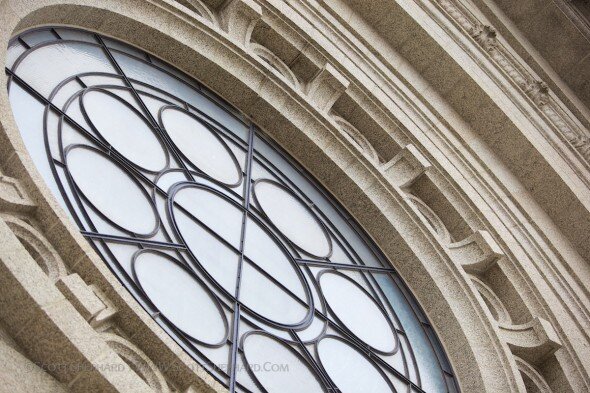 While I was waiting for a few of my students to take photographs of the amazing Cathedral of St. Paul, I stepped outside and took a few shots of the exterior. I had my 70-200 telephoto with me and so I focused on details.It occurs to me that what you see in this photo and how you see it are totally dependent on the photographer. And that's an interesting power to have. . .
While I was waiting for a few of my students to take photographs of the amazing Cathedral of St. Paul, I stepped outside and took a few shots of the exterior. I had my 70-200 telephoto with me and so I focused on details.It occurs to me that what you see in this photo and how you see it are totally dependent on the photographer. And that's an interesting power to have. . .
Architecture
04-15-12 Textured Geometry
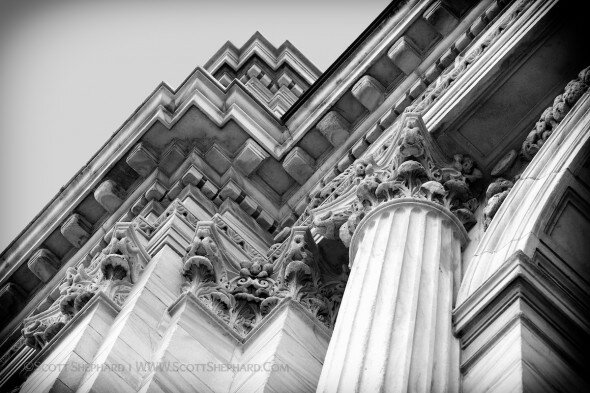 Lately, I have become very conscious of the role that texture plays in my photography and that what attracts my eye is often the textures in a scene, not the scene itself. And because textures are enhanced (or even caused) by light, photography is all about light. The word photography literally means "writing with light." Study this photo and if you can see the textures, you can see the light.Having said that, it's hard not to see all of the textures in this photo, which is of the south facade of the Minnesota State Capitol building in St. Paul. I liked the color version but when I turned it into black and white, the textures became more important than the color.For those who care, these columns are Corinthian in style, which is characterized by the elaborate design at the top, known in architecture as the capital.
Lately, I have become very conscious of the role that texture plays in my photography and that what attracts my eye is often the textures in a scene, not the scene itself. And because textures are enhanced (or even caused) by light, photography is all about light. The word photography literally means "writing with light." Study this photo and if you can see the textures, you can see the light.Having said that, it's hard not to see all of the textures in this photo, which is of the south facade of the Minnesota State Capitol building in St. Paul. I liked the color version but when I turned it into black and white, the textures became more important than the color.For those who care, these columns are Corinthian in style, which is characterized by the elaborate design at the top, known in architecture as the capital.
04-06-12 A Pretty Big Dog
03-24-12 He's Watching Us
No Devil In These Details
02-14-12 Monument
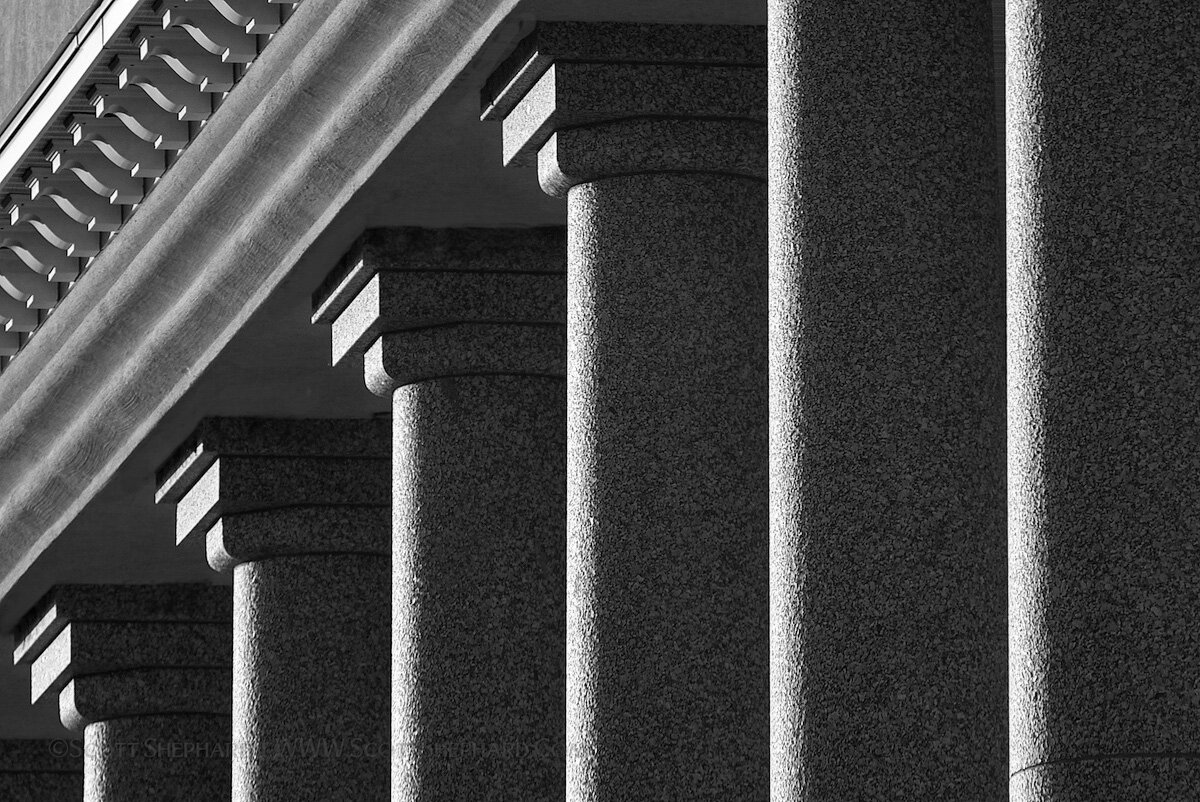 This is a shot of the front of the Terry Redlin Center in Watertown, South Dakota. And I think it is a good example of the power of the photographer to direct the viewer's attention to details and views that he or she wouldn't or couldn't get independently. Most people see the Redlin center like this.I chose to focus on a very small section of columns just under the triangular pediment. I also chose an oblique angle. Finally, I used a telephoto lens to compress the focal plane, something the human eye can't do.Am I manipulating you? Youbetcha!And, as if you don't already feel used enough, how about my black and white treatment compared to "real" color? I don't know about you, but I like the b&w version better because the photo seems more unified. The colored version tends to allow you look at features in this scene in a way I don't want you to.This is all in a day's work and these are the kind of things true photographers think about. And my goal in life is to keep getting closer to being a "true photographer."
This is a shot of the front of the Terry Redlin Center in Watertown, South Dakota. And I think it is a good example of the power of the photographer to direct the viewer's attention to details and views that he or she wouldn't or couldn't get independently. Most people see the Redlin center like this.I chose to focus on a very small section of columns just under the triangular pediment. I also chose an oblique angle. Finally, I used a telephoto lens to compress the focal plane, something the human eye can't do.Am I manipulating you? Youbetcha!And, as if you don't already feel used enough, how about my black and white treatment compared to "real" color? I don't know about you, but I like the b&w version better because the photo seems more unified. The colored version tends to allow you look at features in this scene in a way I don't want you to.This is all in a day's work and these are the kind of things true photographers think about. And my goal in life is to keep getting closer to being a "true photographer."
Amazing Lines
Duomo Siena
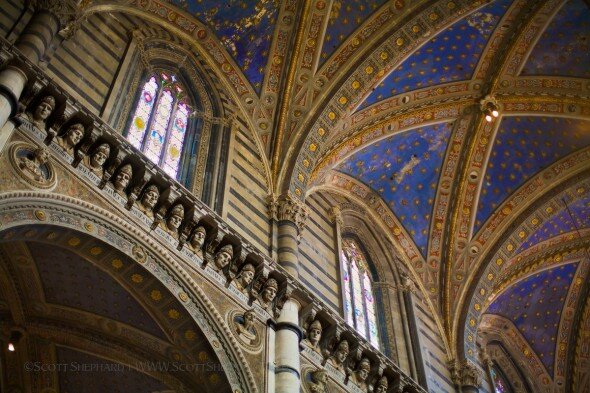 Here's another photo of the Siena Cathedral and one that I adjusted with Apple's raw image processing software called Aperture. I think it's an amazing tool but today I decided it is especially useful to people who shoot architectural interiors in poorly lit places - such as the Duomo Siena. I won't bore you with the technical details, but there are several places within this photo that got special and unique attention - something I never did in Photoshop.If you are wondering about all of those faces that are peering outward, those are portraits of every pope going back to St. Peter, Given that the duomo was built in the 1300's, I wonder if the builders had the foresight and imagination to leave room for at least another seven or eight hundred years of Popes?Canon 5DII 1/60s f/1.4 ISO400 50mm
Here's another photo of the Siena Cathedral and one that I adjusted with Apple's raw image processing software called Aperture. I think it's an amazing tool but today I decided it is especially useful to people who shoot architectural interiors in poorly lit places - such as the Duomo Siena. I won't bore you with the technical details, but there are several places within this photo that got special and unique attention - something I never did in Photoshop.If you are wondering about all of those faces that are peering outward, those are portraits of every pope going back to St. Peter, Given that the duomo was built in the 1300's, I wonder if the builders had the foresight and imagination to leave room for at least another seven or eight hundred years of Popes?Canon 5DII 1/60s f/1.4 ISO400 50mm
Under An Amazing Dome
The Pantheon Redux
The Quiet Gallery
A Study In Green
 I was wandering through the French Quarter and I bumped in to the Louisiana Supreme Court Building. I took several photos but this is one I liked the most.This is an iPhone photo and I'll admit that this photo is heavily doctored. I started in an app called Filter Mania and finished in Instagram. Like it or not, doctored photos are all the rage these days.
I was wandering through the French Quarter and I bumped in to the Louisiana Supreme Court Building. I took several photos but this is one I liked the most.This is an iPhone photo and I'll admit that this photo is heavily doctored. I started in an app called Filter Mania and finished in Instagram. Like it or not, doctored photos are all the rage these days.


